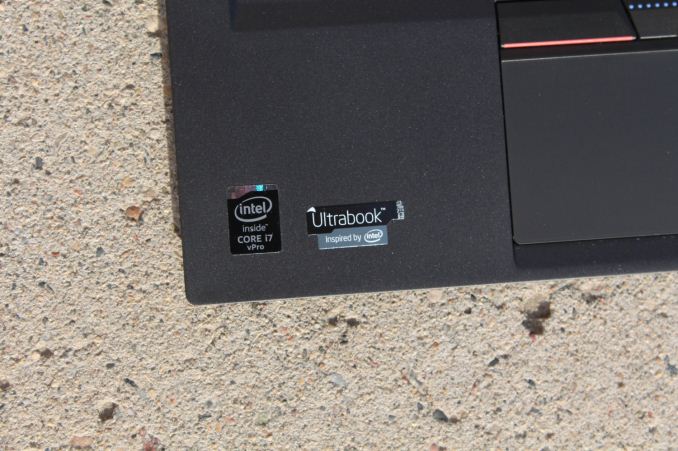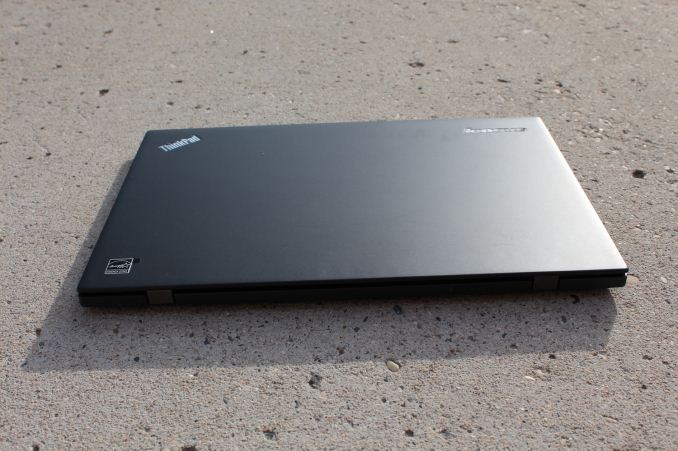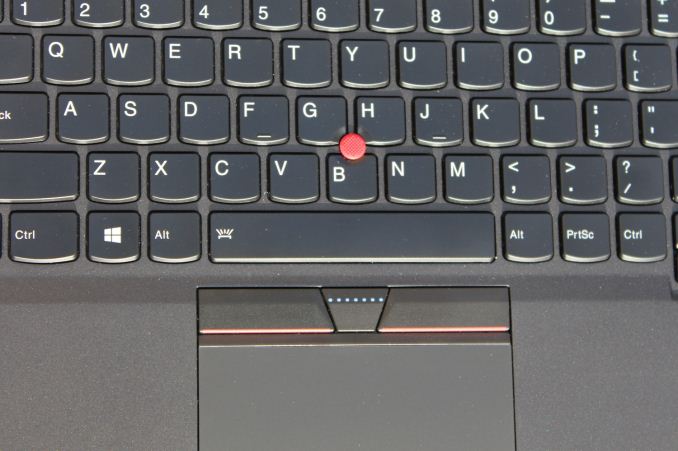The Lenovo ThinkPad X1 Carbon Review (2015)
by Brett Howse on May 21, 2015 8:00 AM EST- Posted in
- Laptops
- Lenovo
- ThinkPad
- Ultrabook
- Broadwell-U
Final Words
The X1 Carbon that Lenovo shipped out for review is likely the fastest Ultrabook yet. The Broadwell Core i7 is certainly a step ahead of the other devices we have tested, and the included PCIe SSD is basically the fastest drive offered today. It is also one of the most expensive Ultrabooks around, with the as-tested price as configured on Lenovo.com at $2100. That is a lot of money for an Ultrabook. The base price is a lot less, but at almost $1100 it is missing some important things like an IPS display and 8 GB of memory. Really the starting configuration is about $1300 once you add those on, and the price can go up again if you opt for more storage.
There is a tremendous amount of competition in the Ultrabook space, so Lenovo needs to differentiate the X1 Carbon and its higher than average price. It does that with the construction to start with. The carbon fibre top is incredibly strong for such a thin display, and the magnesium and aluminum lower half is also very stiff and feels solid. Yet at the same time, the weight of this device is extremely impressive at 2.8 to 3.1 lbs. That is only a hair more than the XPS 13, which has a smaller display and a much smaller body.
The keyboard is also very good on the X1 Carbon, and was likely the most enjoyable keyboard I have had the pleasure of using on an Ultrabook. There are devices out there which are better, but most of them are not this thin, and despite the reduced travel, typing was enjoyable. Lenovo also listened to its customer base and reversed their decision on the function keys, and we see a return of a much more traditional keyboard. I don’t love the Fn and Ctrl keys being reversed as compared to most devices, but it really did not take very long to get used to using it in a new location. For those that can’t adapt, you can go into the BIOS and swap the key functions. The backlighting also was nicely done and has several steps for brightness, and really make it easy to use in a dim setting.
I’m also a big fan of the TrackPoint and I personally find it to be a much more efficient way for me to navigate the GUI. For those that don’t like it, you can disable it (or the trackpad) in the mouse settings and just use the trackpad. Luckily the trackpad is also quite good on the X1 Carbon. There was not any latency that I could detect and it was very accurate with taps, double taps, and scrolling.
The fingerprint reader is also something that I wish was on every notebook. It makes it effortless to log in, and while biometrics may have their detractors, they do allow you to have complex passwords but not have to use them as much, which is going to be more secure than a password like 12345 (which is also the combination of my luggage) and with the Windows Hello initiative coming in Windows 10, there should be a bright future for this kind of login.
Not all is perfect, as with most things. The display is good, but not great. It was great to see Lenovo include an ICC profile but it is too bad that it is not more effective. The display is not overly bright, and the color accuracy is just average. Luckily this was the IPS model though.
The other big detraction was the battery life, which was certainly below expectations. The battery inside is not massive at just 50 Wh, but that means the device needs to be even more efficient, which it is not. Some of that comes down to the X1 Carbon having a physically larger display than most Ultrabooks of course, as well as a higher than average display resolution, but there is likely more to the story. In the end, what matters is the actual battery life, and it could not live up to the lofty results of recent times. At least it charges very quickly, which is a big help.
SIM Slot on the rear of the laptop
A lot of the competition has more USB ports as well, and most have SD card readers built in too. The X1 Carbon has just two USB 3.0 ports and no SD card reader. One partial trade-off is that it does offer a model with LTE connectivity.
Despite the battery life, I really enjoyed using the X1 Carbon. It has an understated look about it which is very traditional ThinkPad, but in a much slimmer design. It is very easy to carry around in a bag, and when you get where you need to go, there is plenty of power on tap to get your work done.














103 Comments
View All Comments
Brett Howse - Thursday, May 21, 2015 - link
No I don't think so :) But if you do need to be able to run one over, you could get one of these http://www.business.panasonic.com/fully-rugged-lap...fokka - Thursday, May 21, 2015 - link
i agree with most things here. 4gb of RAM isn't acceptable in an ultrabook of the thinkpad brand in 2015 and neither is a TN panel. at least the days of 900p displays are over now and i prefer the 1440p display with rgb stripe to 1800p panels using some kind of pentile matrix.still, for a "professional"-grade ultrabook, which might also be used outside the office, the display is much too dim. under 300nits is a bad showing imho and with ever more efficient displays and LEDs, i would like to see more models approaching the 400nits-mark, instead of struggling to get 300.
i'm also wary of the 128gb starting config, if you ask me there should only be options from 256gb-1tb, but i guess you got to meet the lower price points somehow as well.
i'm glad lenovo came to their minds in regard to the function keys and the track pad buttons, but while they improved battery life, it still is mediocre at best. i think 50wh in a 14-inch form factor that is neither especially thin, nor has remarkably thin bezels is simply too little. 60wh would be much nicer, offering 20% more runtime, and looking how dell stuffs 52wh inside the "miniscule" xps13, 60wh should be manageable on the x1.
regarding I/O the options could be better too. two usb3 ports is the bare minimum i would expect from a thinkpad and opting for a dedicated ethernet extender port doesn't seem like the greatest idea, if you could reach the same goal with another usb port plus ethernet adapter. using usb type-c would be even better for that and you could use it for the docking port as well.
in the end it is a nice and fast machine, that's not cheap when configured properly, that is a big step up from the last iteration (but how could it not be?), but with some mediocre scores when it comes to display and runtime.
for the money one can spend on a higher end x1 i would at least like to see those two main flaws sorted out, otherwise it is a quite nice machine.
meacupla - Thursday, May 21, 2015 - link
Lenovo always lags behind others when it comes to panels offered.It's like they are purposefully obtuse about upgrading product lines to newer hardware, or are trying to make more money by skimping on their top tier products.
I really don't know of any other 'reputable' company that does this with their high end products.
edzieba - Thursday, May 21, 2015 - link
The dock you have pictured is the regular OneLink dock. The OneLink Pro dock has a DVI port in place of the HDMI, adds an extra DisplayPort output, and adds a pair of USB3 ports on the rear.Brett Howse - Thursday, May 21, 2015 - link
Fixed sorry about that!Essence_of_War - Thursday, May 21, 2015 - link
RAM is soldered down, but is the SSD soldered to the logic board also, or is that potentially end-user replaceable?Kristian Vättö - Thursday, May 21, 2015 - link
The SSD is replaceable, that's how I got early access to the Samsung SM951 in the laptop ;-)Essence_of_War - Thursday, May 21, 2015 - link
Good to know that drive failures can be addressed in-the-field!Michael Bay - Thursday, May 21, 2015 - link
I think Lenovo and bad display panels now are more or less synonymous, in notebooks at least.With prices as high as they are, would it kill them to put in something different from usual tn horrorshow for once?
der - Thursday, May 21, 2015 - link
Thank you Brett. Brett is love, Brett is life.